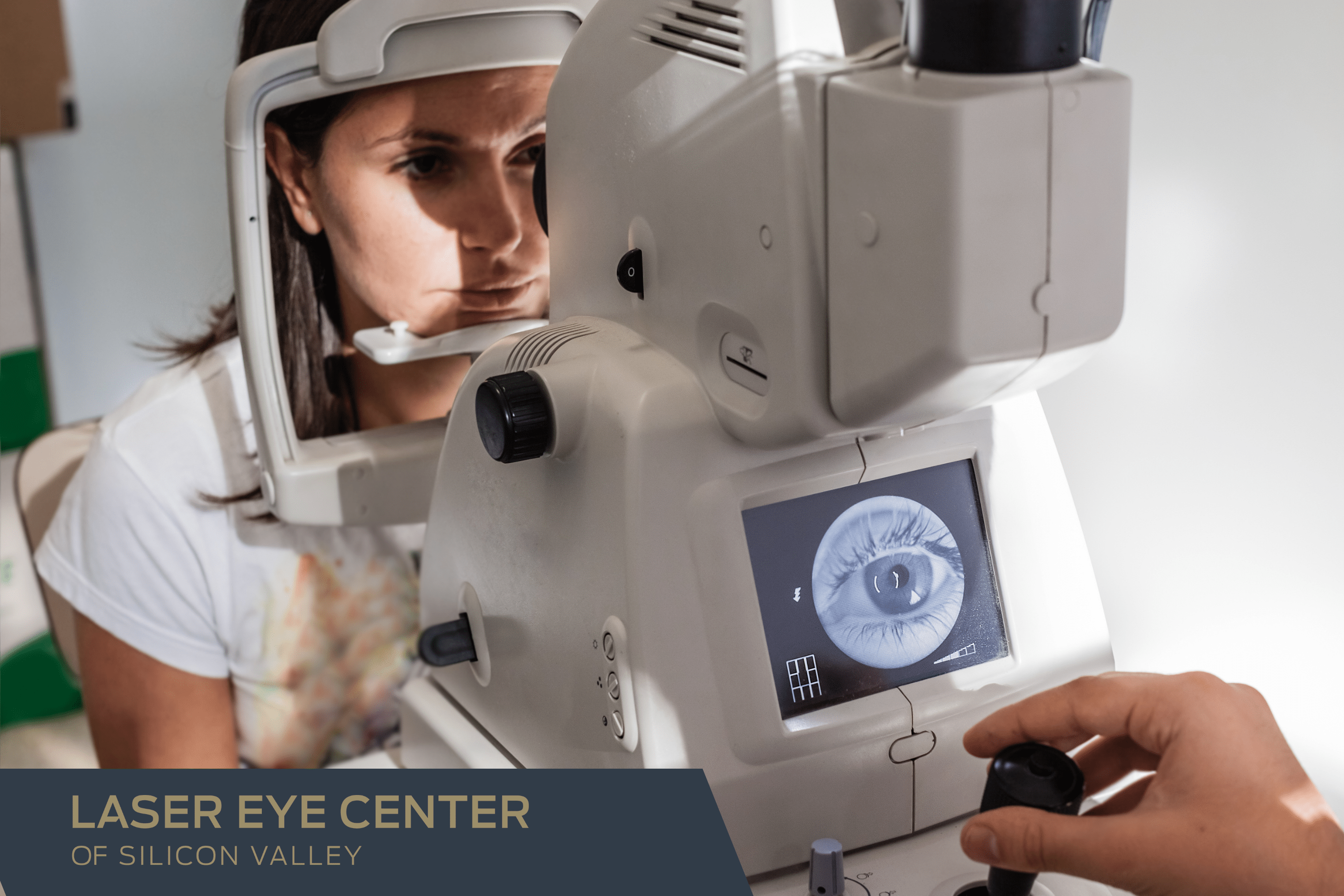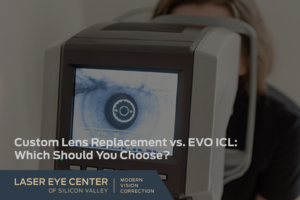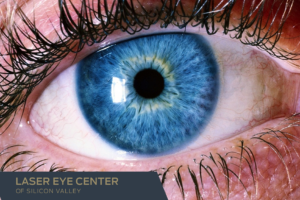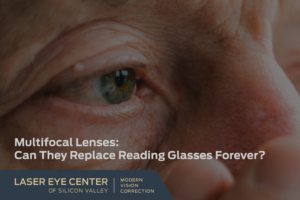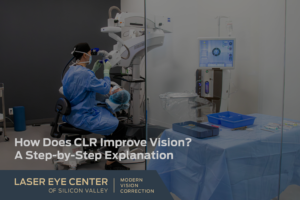Laser Eye Center provides patients with a comprehensive set of diagnostic tests to determine the health of your eyes. This specialized equipment is crucial for diagnosing eye conditions and determining the suitability for modern vision correction procedures. Taken together, this Advanced Vision Analysis (AVA) of your eyes gives doctors what they need to make a specific recommendation customized to your vision and goals.
From the Lensometer, which measures your current eyewear, to the Pentacam, akin to an MRI for the eye’s cornea, each device plays a vital role in evaluating different aspects of eye health and functionality.
In this comprehensive guide, we will navigate through the significance of these tools, shedding light on how they aid in the assessment process to determine if your eyes are sufficiently healthy for modern vision correction.
AVA: The Journey to Clear Vision Begins Here
The Importance of Advanced Vision Analysis
The Advanced Vision Analysis (AVA) represents a significant leap forward in eyecare. It provides a comprehensive examination of the eye, allowing doctors to detect and diagnose eye conditions with high precision. By using AVA, specialists can identify issues that may not be noticeable during a standard eye exam.
This depth of analysis is crucial for developing an effective treatment plan, especially for individuals considering sight correction procedures like LASIK, EVO ICL, or Custom Lens Replacement (also known as Refractive Lens Exchange). With detailed images and measurements of each eye, the data is integral to ensuring the safety and success of any recommended vision correction procedures.
By understanding the specifics of each patient’s eye health, doctors can tailor treatments to individual needs, leading to better outcomes and potentially transforming a person’s quality of life.
How Our Approach Sets Us Apart
At Laser Eye Center of Silicon Valley, our approach to vision assessment and correction is rooted in a commitment to excellence and personalized care.
Using AVA technology, we collect over one million data points on your eyes to provide accurate diagnoses and establish a foundation for the most effective treatment plan.
This data will tell us if you are a candidate for one of the five Modern Vision Correction Procedures offered at our clinic.
Our focus on advanced diagnostics means we often uncover underlying issues that, when addressed, can significantly improve your vision outcomes.
Choosing us for your vision needs means you’re not just another patient; you’re a partner in your eye health journey. We ensure you’re informed, comfortable, and confident every step of the way, setting us apart as a leader in eye care.
Understanding AVA: The Power of Modern Technology
What is Advanced Vision Analysis?
Advanced Vision Analysis (AVA) is a cutting-edge process that involves the use of modern technology to thoroughly examine and evaluate an individual’s eyesight and eye health. AVA goes beyond basic vision screening to provide an in-depth look at the structures of the eye, utilizing equipment that can map the eye’s surface, measure eye pressure, and provide detailed images of its internal components.
The primary goal of AVA is to gather precise data that can help rule out any eye conditions that would make you not eligible for Modern Vision Correction. The detailed assessments can reveal conditions such as glaucoma, macular degeneration, and diabetic retinopathy. If we detect these, we will refer you to a specialist for further treatment as our doctors focus specifically on Modern Vision Correction and we do not manage eye disease.
This level of detail is particularly beneficial for planning your Modern Vision Correction procedure. AVA is also instrumental in vision correction. By providing a complete picture of the eye’s anatomy and functions, it enables our doctors eye care professionals to design a treatment plans which is fully customized to your eye’s anatomy, as well as your goals for seeing without glasses or contacts—ensuring that procedures like LASIK or cataract surgery are both safe and effective.
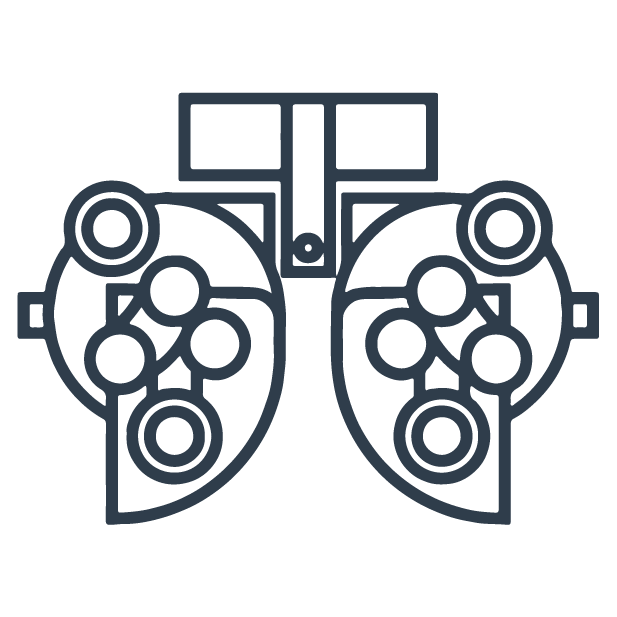
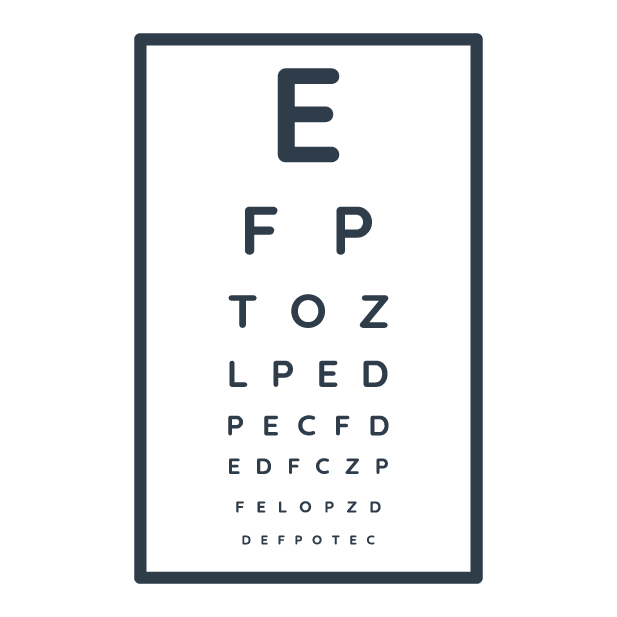
This highly tailored, bespoke approach to vision care is especially important for patients seeking modern vision correction so they can without glasses or contact lenses.
In essence, AVA is a cornerstone of modern vision correction. It empowers our doctors to achieve the best possible results from their vision correction experiences.
The Equipment Behind Your Eye Exam: More Than Meets the Eye
Lensometer: Your Eyewear's Best Friend
The Lensometer, often considered an optician’s staple instrument, is crucial in verifying the correct prescription in a pair of eyeglasses. This device measures the refractive power of the lenses, ensuring they match the optical needs of the patient. For those who rely on glasses for daily activities, the Lensometer’s role is essential in confirming that their eyewear is aiding rather than hindering their vision.
Moreover, it’s a valuable tool for checking the alignment and orientation of bifocal or progressive lenses, as well as the coating and thickness of the lenses. The accuracy provided by the Lensometer is fundamental not just for comfort but also for preventing eye strain and ensuring optimal vision correction.
In the context of AVA, the Lensometer contributes to a comprehensive vision assessment by providing baseline data about a patient’s current traditional vision correction solution
IOLMaster: The Lens Replacement Expert
The IOL (Intraocular Lens) Master is a high-precision tool that plays a pivotal role in custom lens replacement refractive cataract surgery. It also helps to select the proper size of the EVO ICL for patients having that procedure.
It uses advanced optical biometry to measure the length and curvature of the eye’s interior, allowing for accurate calculation of the power needed for the replacement lens. This ensures that post-surgery, patients can enjoy the best possible vision, often reducing (or eliminating) the need for glasses.
In the realm of eye health, the IOL Master represents a leap forward in customizing surgical outcomes. It’s non-invasive and quick, providing measurements that are critical for selecting the appropriate intraocular lens for each individual.
For patients undergoing Custom Lens Replacement, the IOL Master’s measurements are integral to achieving clear vision and a successful surgical result.
The device’s ability to provide such precise data underscores the importance of technology in modern ophthalmology, and its use is a testament to our commitment to quality care and successful vision correction.
OCT: The Retina's Health Checker
The Optical Coherence Tomography (OCT) device is a sophisticated imaging system that’s revolutionized the way we understand the retina, the delicate tissue lining the back of the eye. It uses light waves to take cross-section pictures of the retina, allowing for the observation of its layered structure.
The level of detail provided by the OCT is unparalleled, revealing abnormalities that could suggest the early stages of conditions such as age-related macular degeneration and diabetic retinopathy.
For individuals experiencing changes in vision that are not related to their eyewear prescription, the OCT device is invaluable in helping to pinpoint the cause. It’s a non-invasive procedure that can be completed quickly, yet it offers a wealth of information, contributing to accurate diagnoses and effective monitoring of retinal diseases.
By incorporating the use of an OCT device in routine eye exams, the team at Laser Eye Center of Silicon Valley is able to detect potential issues before they progress, highlighting our proactive approach to understanding our patients’ eye health.
Automated Refractor: Measuring for Accuracy
An Auto Refractor is a key device in the realm of optometry and ophthalmology, used to initially determine a person’s prescription for eyeglasses or contact lenses. This instrument measures how the eye focuses light, which is essential for identifying refractive errors like myopia (nearsightedness), hyperopia (farsightedness), astigmatism, and presbyopia.
The process with an Auto Refractor is fast and efficient, often providing a more comfortable experience for the patient. By giving our team a starting point in the exam, we can more quickly determine your current refraction (aka “refractive error”).
Incorporating this device into our vision assessment arsenal signifies Laser Eye Center of Silicon Valley’s commitment to precision in vision correction. The Automated Refractor’s ability to swiftly provide accurate data helps us deliver top-notch care and highly personalized solutions for our patients’ visual needs.
Optos: The Retina's Window
The Optos device is an advanced imaging tool that allows eye care professionals to capture a wide-field view of the retina. This panoramic view can reveal the health of the retina and is crucial for detecting peripheral retinal diseases, which might be missed during a standard eye exam.
The ultra-widefield retinal imaging provided by the Optos can detect signs of retinal detachment, glaucoma, diabetic retinopathy, and more.
This technology is particularly beneficial for patients with a high risk of retinal disease, such as those with diabetes or a family history of eye conditions. The Optos is non-invasive and captures detailed images quickly, making the screening process comfortable and convenient for patients.
By offering a comprehensive view of the retina, the Optos plays a significant role in preventative eye health care. Its detailed imaging capabilities make it a valuable tool in the early detection and management of eye diseases, reinforcing Laser Eye Center of Silicon Valley’s dedication to our patients’ long-term vision health.
Pentacam: The Cornea's MRI
The Pentacam is a state-of-the-art imaging device that functions similarly to an MRI for the cornea, providing high-resolution images and detailed maps of the cornea’s anterior and posterior surfaces. This comprehensive analysis is essential for patients considering corneal surgery or procedures such as LASIK, as it assists in evaluating the cornea’s thickness, curvature, and overall health.
By producing a complete 3D image of the patient’s cornea, the Pentacam can identify subtle irregularities and signs of conditions like keratoconus, which might affect the outcome of refractive surgery. It is a non-contact, painless procedure that offers a wealth of information within seconds.
Inclusion of the Pentacam in our diagnostic equipment underscores our commitment to tailored treatment plans and precision in every aspect of patient care. It empowers us to ensure the highest standards of safety and efficacy in vision correction procedures, thereby fostering optimal results and patient satisfaction.
iTrace: Analyzing Our Focusing Lenses
The cornea and the lens each focus light as it enters the eye. The iTrace device has proven highly valuable in separating the focusing power of each of these and helps patients understand when their aging lens is significantly interfering with their ability to see.
This is especially true for patients who had LASIK many years ago and wonder if it’s “wearing off”. Using this device, we can show them how the changes in their lens are what is affecting their vision.
The iTrace gives our doctors insight into selecting the most appropriate lens for the CLR procedure and can also help diagnose dry eye so that we can develop a pre-treatment plan to alleviate those symptoms ahead of their procedure.
Procedures in Focus: Your Path to Better Vision
All-Laser LASIK: Advanced Sight Correction
All-Laser LASIK is a forefront procedure in the field of sight correction, representing the evolution of laser eye surgery. Unlike traditional LASIK, which uses a blade to create a corneal flap, All-Laser LASIK employs two types of lasers for increased precision and safety. The femtosecond laser creates the flap, and the excimer laser corrects the refractive error by reshaping the cornea.
This bladeless approach minimizes the risk of complications and allows for a more controlled and accurate procedure.
Patients typically experience a quick recovery, with many noticing significant improvements in their vision almost immediately after surgery.
The precision of All-Laser LASIK is especially beneficial for patients with thin corneas, as the technology allows for a more conservative approach. By offering All-Laser LASIK, the Laser Eye Center of Silicon Valley provides our patients with a cutting-edge option for achieving clearer vision and potentially freeing themselves from glasses or contact lenses.
SMILE LASIK: The Minimally Invasive Option
SMILE LASIK, short for Small Incision Lenticule Extraction, is a newer form of laser eye surgery and a minimally invasive alternative to traditional LASIK. It uses a single femtosecond laser to create a small, lens-shaped piece of tissue within the cornea, which is then removed through a tiny laser-made incision.
This process corrects refractive errors like myopia (nearsightedness) and astigmatism with minimal disruption to the cornea’s surface. It does not correct hyperopia (farsightedness).
The SMILE procedure boasts a reduced risk of dry eye symptoms post-surgery and is often recommended for patients with lifestyle or occupations requiring high physical activity due to its stability and fast healing time. It’s an appealing option for those who may not have been candidates for LASIK due to thin corneas or other contraindications.
Offering SMILE LASIK at our center reflects our commitment to providing the latest and most innovative vision correction techniques, ensuring our patients have access to a range of options suitable for their unique needs.
EPI LASIK: Surface Ablation Techniques
EPI LASIK, or Epithelial Laser In Situ Keratomileusis, is a type of refractive surgery that falls under the category of surface ablation techniques. It’s designed to reshape the cornea without creating a full-thickness corneal flap, which is typically done in traditional LASIK procedures.
Instead, EPI LASIK involves separating a thin layer of the corneal epithelium, then using an excimer laser to correct the refractive error on the surface of the cornea.
This approach can be beneficial for patients with thinner corneas or those with concerns about creating a corneal flap. EPI LASIK is known for preserving the structural integrity of the cornea and can offer a safer alternative for certain individuals.
Recovery from EPI LASIK may involve a bit more discomfort and a slightly longer healing period compared to LASIK, but it remains a viable option for patients seeking a less invasive form of vision correction.
EVO ICL: Insertable Contact Lenses
EVO ICL, or Insertable Collamer Lens, is a type of refractive surgery that involves placing a biocompatible lens inside the eye, behind the iris and in front of the natural lens.
This procedure is an excellent option for patients who are not candidates for LASIK or PRK due to extreme nearsightedness or those with thin corneas. It also appeals to patients who like that it is a reversible procedure.
The EVO ICL is known for providing sharp, clear vision; and because it’s implanted just below the surface of the eye, there’s no daily maintenance required, unlike traditional contact lenses.
The ICL procedure has been in use worldwide for nearly as long as LASIK. It has an outstanding track record both in clinical studies and real-world use.
The EVO ICL procedure is reversible, which offers peace of mind to some patients.
CLR: Custom Lens Replacement
Custom Lens Replacement (CLR), also known as Refractive Lens Exchange (RLE), is a procedure designed for patients with presbyopia or high levels of farsightedness, for whom laser refractive surgery may not be the best option.
CLR involves replacing the eye’s aging lens with an artificial intraocular lens (IOL) tailored to the patient’s specific vision requirements.
This procedure not only corrects the refractive error, effectively reducing the dependence on glasses or contact lenses, but also prevents the development of cataracts in the future, as the artificial lens does not age like the natural lens.
CLR offers a range of IOL options, including light-adjustable, multifocal and accommodating lenses, which can provide patients with a full spectrum of vision from near to far. Our surgeons select the option that will give each patient the ability to achieve their best visual outcome without needing glasses for most to all activities.
Choosing the Right Procedure: Your Vision, Your Choice
Assessing Your Needs: Which Procedure is Best for You?
Determining the most suitable vision correction procedure is a crucial step that requires careful consideration of several factors.
At Laser Eye Center of Silicon Valley, our process begins with a thorough assessment of your eye health, visual acuity, and lifestyle needs. We consider factors such as the thickness and shape of your cornea, the degree of refractive error, and any potential eye conditions that may affect surgery outcomes.
During your AVA consultation, we discuss your daily activities, hobbies, and work requirements to understand how they might influence your choice of procedure. For instance, individuals with active lifestyles may benefit from the stability offered by SMILE LASIK, while those with presbyopia might prefer the range of vision provided by CLR.
Ultimately, our goal is to provide you with all the necessary information and professional guidance to make an informed decision. We aim to match you with a procedure that not only corrects your vision but also aligns with your personal needs and expectations.
At Laser Eye Center, we are known for being conservative in our advice. If we believe that no procedure is your best option, we will tell you. As technology evolves and changes, we will let you know when we have something that will work for you.
Scheduling Your Appointment: Your First Step To Better Vision
Taking the first step towards better vision begins with scheduling your comprehensive eye exam.
During this initial appointment, we’ll conduct a series of tests using state-of-the-art equipment to evaluate your eye health and visual needs thoroughly. It’s an opportunity for us to get to know you and for you to ask questions about our procedures.
Scheduling your appointment is simple.
Simply follow the link below and determine whether you would like to be seen or visit in person at our San Jose or Pleasanton locations, both of which provide AVA.
We also offer virtual consultations for patients not sure if they are ready to come in for the AVA and want to learn more about modern vision correction.

